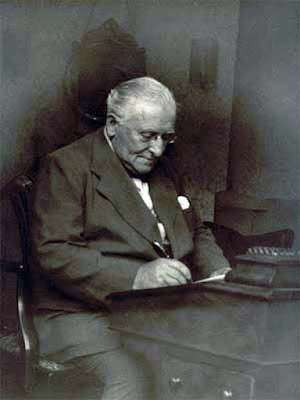I
am almost certain that you have heard the man’s music, but probably never heard
his name. As I recall, the first time I ever heard one of his most popular
pieces was when I was seven years old, at a dance recital in which my cousin
Dianne was a participant. The melody stuck with me and since then I have often (and
fondly) listened to it, primarily as a band piece played by some municipal
band, such as the San Francisco Municipal Band at their Golden Gate Park summer
concerts. However now that I think about it, I hadn’t heard it for some years; yet,
the melody immediately popped into my head when I saw that the now Golden Gate Park
Band had announced its 2016 schedule. The melody was that of In a Persian Market and the composer was
Albert Ketelbey (August 9, 1875 – November 26, 1959)
A
composer, conductor, and pianist, he was born in Birmingham, England and moved
to London in 1889 where he studied at the Trinity College of Music, and where
his abilities set him far apart from his classmates. After graduation however,
he surprised almost everyone by pursuing work not in classical music but as the
musical director of the Vaudeville Theater. Ultimately he gained fame as the
composer of some of England’s most favorite light music, what could have been
considered “pop tunes” of the day, and as a conductor of his own works.
He
also worked for many years for several music publishers such as the Columbia
Graphophone Company, as an arranger and orchestrator, and later wrote music for
silent films. While his pieces in the orthodox classical style of the day were
often widely appreciated, it was his light orchestral pieces that made him famous.
One of his earliest pieces, In a
Monastery Garden (1915) actually sold over a million copies and brought him
considerable notoriety. He followed this with In a Persian Market (1920), Cockney
Suite (1924), In the Mystic Land of
Egypt (1931), and In a Chinese Temple
Garden (1932) — best sellers all, both in print and on records, which made
him a millionaire. (See Below)
It
was during World War II that his popularity began to decline along with his
originality; indeed, much of his post-war works were actually reworked versions
of older pieces. Ultimately he retired, in 1949, to the Isle of Wight where he
remained until his passing.
In a Monastery Garden
In a Chinese Temple Garden
In the Mystic Land of Egypt









